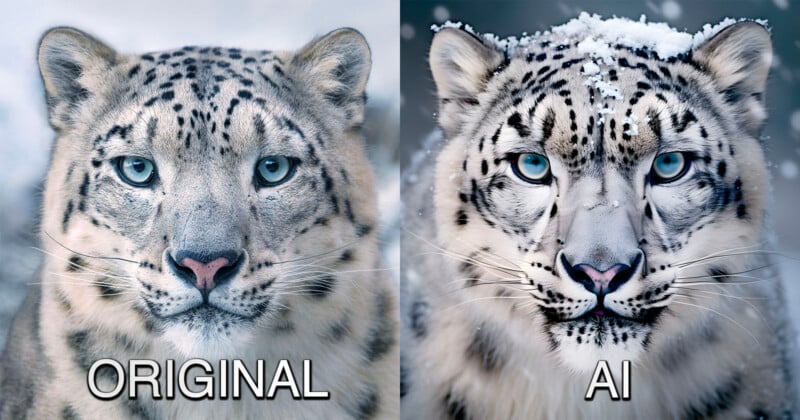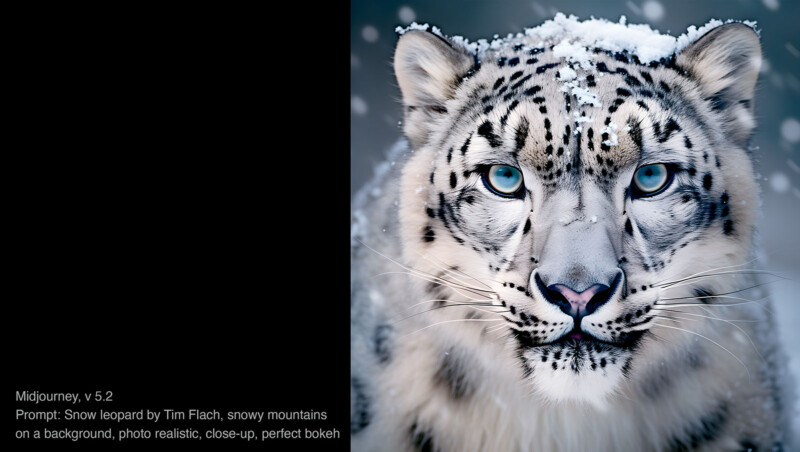Famed Photographer Shows How Easy it is to Recreate His Photos With AI

A photographer whose name was found on a list of artists whose style the AI image generator Midjourney wanted to emulate tells PetaPixel that “creatives must be remunerated.”
Tim Flach, known for his exquisite photos of animals that look like humans, says that he wasn’t surprised when his name was on the list because he has already been recreating his own photos using Midjourney.
The British photographer shared two of his photos with PetaPixel which he created AI versions of by inputting his own name as a prompt. The results speak for themselves.
![]()
![]()
Opt In, Not Opt Out
Flach feels strongly that when it comes to training datasets for AI programs, photographers should be able to “opt in”, rather than the current “opt out” state of affairs.
“I think we should demand from governments a clear ‘opt-in’ and not an ‘opt-out’ situation,” Flach tells PetaPixel.
He likens it to an editor running a photograph in a magazine, “You don’t go and run something in an article without checking with the photographer first and say ‘Well, you can now opt out’.”
Flach says that for some of his projects, he has spent hundreds of thousands of dollars and insists creatives should be remunerated when their work is ingested by an AI program.
“The fact is, if you are impersonating the style of artists, what does it leave when that technology gets a thousand times more powerful?” He says.
“It does create a challenge, I think, for many people’s livelihood. The data sets are being trained on our images. Without these images, it wouldn’t function so effectively.
“And the irony is, many of the artists who’s been scraped will be paying subscription fees back to Midjourney who have investments and profit that runs into billions, one assumes.”
Midjourney could be valued as much as $10 billion after it reportedly generated $200 million in revenue last year despite being a small team of just 40 employees.
Recreating His Own Photos With Midjourney
Flach, whose magnificent photos emphasize animals’ characters and personalities, has been recreating his photos on Midjourney and finds it remarkably easy to generate images in his unique style.

“My style is quite distinctive,” he says. “I did a book on birds that came out in 2021, and you can literally ask the system to do a bird in my style and it picks a particular bird that was in the book and is incredibly close.
“And it always has the black background; it’s looking straight at the viewer. All these factors, you’re not asking it to do anything other than produce an eagle in my style.
“The fact that without our images they would have no capacity at all, I think that’s very hard to grasp. And when it comes to style, the fact you can actually ask it to describe a style by a particular photographer — it seems extraordinary.
“I don’t look at it as today. I look at it as what would happen in five years’ time because effectively it’ll be a thousand times more powerful according to the speed at which generative AI is improving by.
“Essentially, we’re putting a lot of resources into generating content that is being ingested and spat back out again.”
He calls this process image laundering or data laundering. Recently, a database of some 16,000 names of artists kept by Midjourney whose style the AI image generator allegedly wanted to copy was released as part of a lawsuit amendment to a class-action complaint brought by three artists suing Midjourney and Stable Diffusion.
The huge list includes thousands of artists’ names; among them are scores of photographers — both living and dead — whose styles Midjourney apparently wanted to copy so that users of its AI image generator could make AI pictures in the style of that photographer.
The case is ongoing and Midjourney has not commented.
You can find more of Flach’s work on his website and Instagram.
Image credits: Photographs by Tim Flach